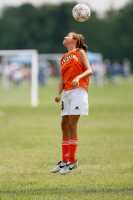
30 Jan Are There Sex Differences in Recovery from Sports-Related Concussions?
MedicalResearch.com Interview with:

Dr. Master
Christina L. Master, MD, FAAP, CAQSM, FACSM
Professor of Clinical Pediatrics
Perelman School of Medicine at the University of Pennsylvania
Co-Director, Minds Matter Concussion Program
Pediatric and Adolescent Sports Medicine, Division of Pediatric Orthopedics
Attending Physician, Care Network – Karabots Center
The Children’s Hospital of Philadelphia
Philadelphia, PA 19104
MedicalResearch.com: What is the background for this study?
Response: There have been multiple studies investigating potential sex differences in outcomes from concussion which have sometimes had conflicting results with some studies indicating that females take longer to recover than males and some studies reporting no difference in recovery between females and males, with most of these studies being conducted either retrospectively or prospectively in smaller cohorts. This large-scale multi-center prospective study in collegiate athletes provided an opportunity to compare females and males across comparable sports to examine both potential intrinsic or biologic factors (sex differences) or extrinsic (environmental or gender differences) that contribute to outcomes.
MedicalResearch.com: What are the main findings?
Response: The main finding of this study was that across gender-comparable sports or sports that fielded single-sex female and male teams at the collegiate level, there was no overall difference in recovery in terms of time until return to play after concussion. When examining subgroups by contact level of sport, females took longer to recover than males in contact sport, but males took longer to recover than females in limited contact sport.
The conflicting nature of these findings indicates that it isn’t simply that females take longer than males to recover from concussion due to intrinsic biological factors (i.e. sex differences). These findings would indicate that there are likely both intrinsic (biological sex differences) and extrinsic (external environmental factors) that interact to produce these findings. When examining by collegiate division level of play, it was notable that there was no difference in recovery between the sexes at the Division I level of play, but that females took longer to recover at the DivisionII/III level of play. These findings would indicate that resource allocation may be one of those extrinsic factors that affects concussion recovery outcomes – that regulations like Title IX may have an impact, not only on equal access to educational and sports resources for female athletes, but also equal access to presumably to specialized athletic training and sports medical care such that, if any biological sex differences do exist between females and males in concussion recovery, external factors such as access to specialized medical care may mitigate those differences and close the gap in disparities between females and males. The findings at the Division levle of play might indicate that DI schools have greater resources to allocate to sports such that there are no sex differences in recovery whereas DII/DIII may have fewer resources that are unevenly allocated, resulting in differences in recovery between the sexes that may be driven by both biological factors as well as environmental factors.
 MedicalResearch.com: What should readers take away from your report?
MedicalResearch.com: What should readers take away from your report?
Response: If biological sex differences exist in concussion recovery, extrinsic factors such as access to specialized athletic training support and sports medical care may mitigate those differences and resource allocation for sports medical support may be an important method of closing any gap in concussion recovery between the sexes at the collegiate level.
MedicalResearch.com: What recommendations do you have for future research as a result of this work?
Response: It would be important to examine this question on a large scale at the youth sport level where there is no Title IX protection under the law mandating equal access to educational, sports and presumably athletic training and sports medical care. Traditionally lower contact sports, for both boys and girls, as well as girls’ sports in general, have less athletic training coverage than boys’ collision sports such as football, ice hockey and lacrosse. There is emerging evidence including from research from our group (Desai, CJSM, 2019) that earlier access to specialized sports medical care is associated with similar recovery outcomes between girls and boys and that later presentation to specialized sports medical care is associated with longer recovery times for females indicating that equitable resource allocation at the youth sports level may have a huge role to play in mitigating any sex differences in concussion recovery outcomes for girls and thus represents an important extrinsic modifiable factor that could improve concussion outcomes for girls.
No disclosures
Citation:
Master CL, Katz BP, Arbogast KB, McCrea MA, McAllister TW, Pasquina PF, Lapradd M, Zhou W, Broglio SP; CARE Consortium Investigators. Differences in sport-related concussion for female and male athletes in comparable collegiate sports: a study from the NCAA-DoD Concussion Assessment, Research and Education (CARE) Consortium. Br J Sports Med. 2020 Dec 21:bjsports-2020-103316. doi: 10.1136/bjsports-2020-103316. Epub ahead of print. PMID: 33355211.
JOIN OUR EMAIL LIST
[mailpoet_form id="5"]We respect your privacy and will never share your details.
[last-modified]
The information on MedicalResearch.com is provided for educational purposes only, and is in no way intended to diagnose, cure, or treat any medical or other condition. Always seek the advice of your physician or other qualified health and ask your doctor any questions you may have regarding a medical condition. In addition to all other limitations and disclaimers in this agreement, service provider and its third party providers disclaim any liability or loss in connection with the content provided on this website.
Last Updated on January 30, 2021 by Marie Benz MD FAAD
